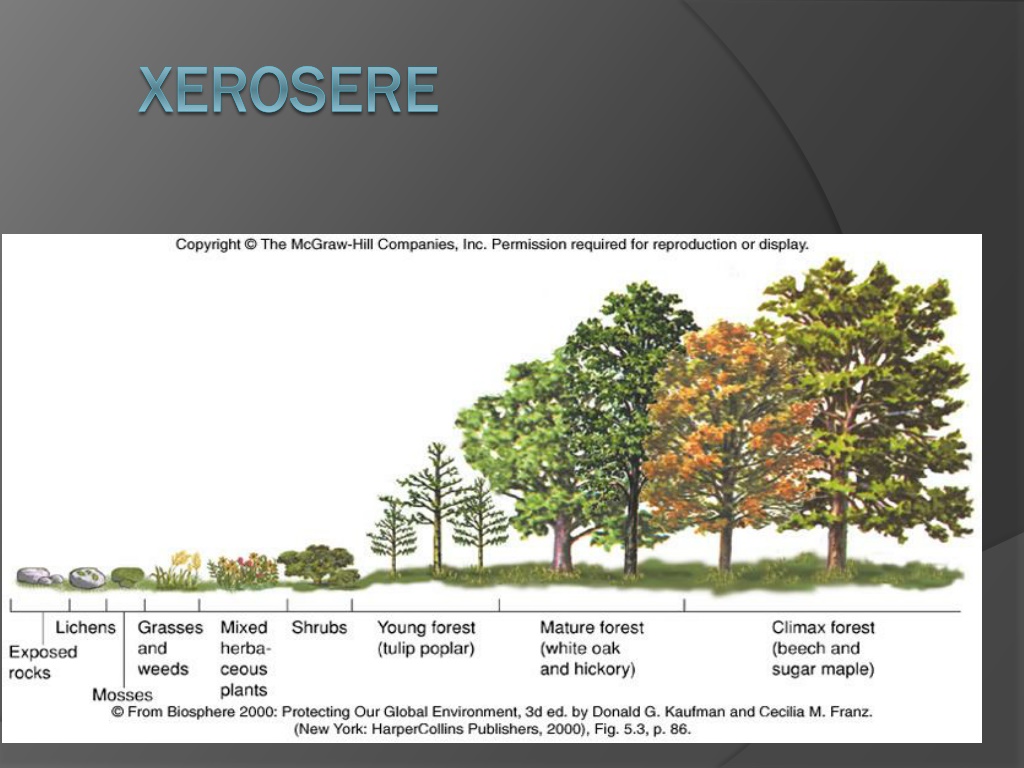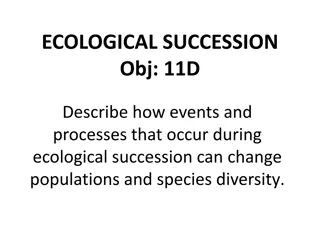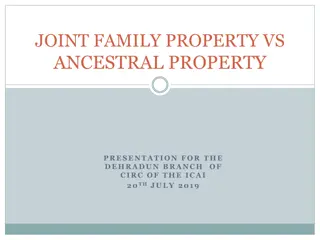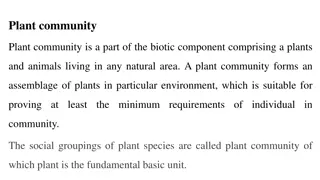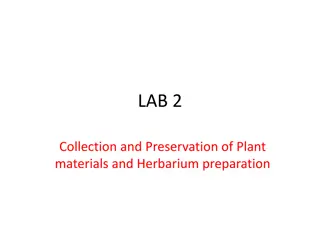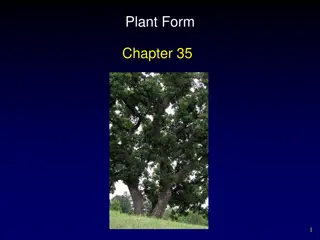Understanding Xerosere: Plant Succession in Dry Environments
Xerosere is a plant succession process limited by water availability, starting from bare rocks and advancing through stages of lichen colonization to moss growth. This ecological progression, initiated in dry environments like deserts and rock formations, demonstrates how plant communities establish and evolve over time in challenging conditions.
Download Presentation

Please find below an Image/Link to download the presentation.
The content on the website is provided AS IS for your information and personal use only. It may not be sold, licensed, or shared on other websites without obtaining consent from the author. Download presentation by click this link. If you encounter any issues during the download, it is possible that the publisher has removed the file from their server.
E N D
Presentation Transcript
XEROSERE XEROSERE
Xerosere Xerosere Xerosere is a plant succession which is limited by water availability. Xerarch succession of originated in extremely dry situation such as sand deserts, sand dunes, salt deserts, rock deserts etc ecological communities
Bare rocks Bare rocks are produced when glaciers recede or volcanoes erupt. Erosion of these rocks is brought by rain water and wind loaded with soil particles. lichen, pioneer species of bare rocks. which act as
Crustose Crustose lichen stage lichen stage A bare rock consists of solid surface or very large boulders and there is no place for rooting plants to colonize. The thalli of crustose lichens can adhere to the surface of rock and absorb moisture from atmosphere; therefore, these colonize the bare surfaces of rocks first
These lichens produce acids which corrode the rock When these lichens die their thalli are decomposed to add humus. This promotes soil building and the environment becomes suitable for growth of foliose and fruticose type of lichens.
Foliose and Foliose and fruticose fruticose lichen stage lichen stage Foliose have thalli, fruticose are bushes. They are attached substratum at one point therefore, do not cover completely. lichens leaf-like while lichens like the small to the only, the soil
They can absorb and retain more water and are able to accumulate more dust particles. Their dead remains are decomposed to humus which mixes with soil particles and help building substratum and improving soil moisture contents further. These autogenic changes establishment of mosses. favor growth and
Moss stage Moss stage The spores of xerophytic mosses, such as Polytrichum, Tortula, and Grimmia, are brought to the rock where they succeed lichens. Their rhizoids penetrate soil among the crevices, secrete acids and corrode the rocks. The bodies of mosses are rich in organic and inorganic compounds. The changing environment leads to migration of lichens and helps invasion of herbaceous vegetation that can out- compete mosses.
Herb stage Herb stage Herbaceous weeds, mostly annuals such as asters, evening primroses, and milk weeds, invade the rock. Their roots penetrate deep down, secrete acids and enhance the process of weathering.
xeric conditions begin to change and biennial and perennial herbs and xeric grasses such as Aristida, Festuca, and Poa, begin to inhabit. These climatic conditions favor growth of bacterial and fungal populations, resulting in increase in decomposition activity.
Shrub stage Shrub stage The herb and grass mixture is invaded by shrub species, such Phytocarpus. Early invasion of shrub is slow, but once a few bushes have become established, birds invade the area and help disperse scrub seeds. This results in dense scrub growth shading the soil and making conditions unfavorable for the growth of herbs, as Rhus and
Tree stage Tree stage Change in environment favors colonization of tree species. The tree saplings begin to grow among the scrubs and establish themselves.
The kind of tree species inhabiting the area depends upon the nature of the soil. The trees form canopy and shade the area. Shade-loving scrubs continue to grow as secondary vegetation. Leaf litter and decaying roots weather the soil further and add humus to it making the habitat more favorable for growth to trees.
Climax stage Climax stage The succession culminates in a climax community, the forest. Many intermediate tree stages develop prior to establishment of a climax community. The forest type depends upon climatic conditions.
